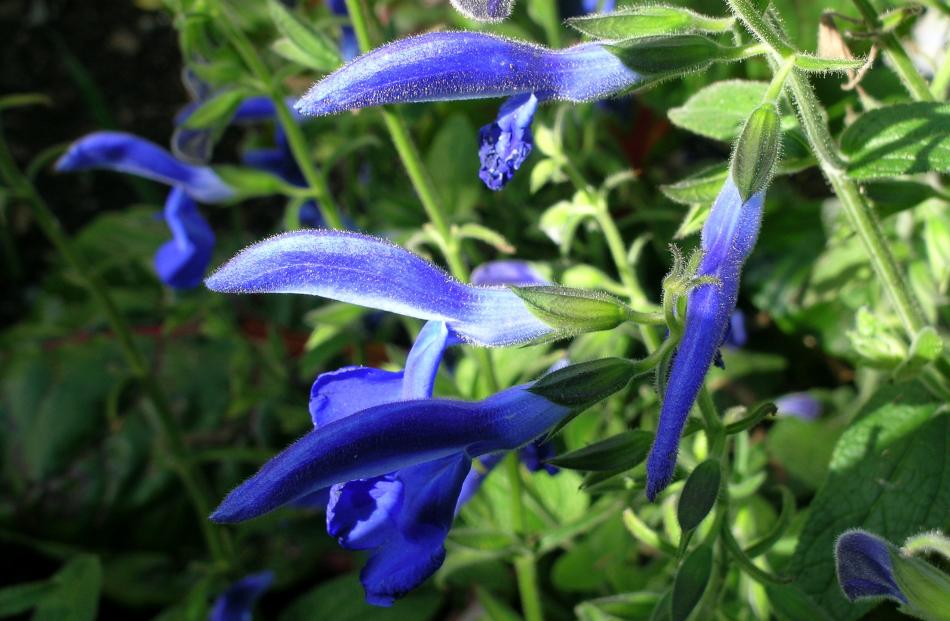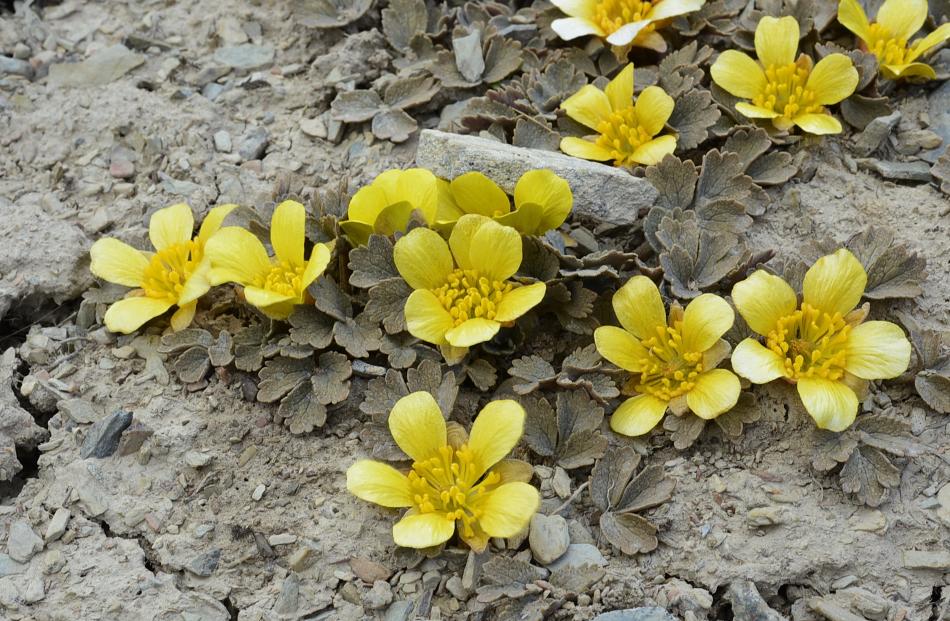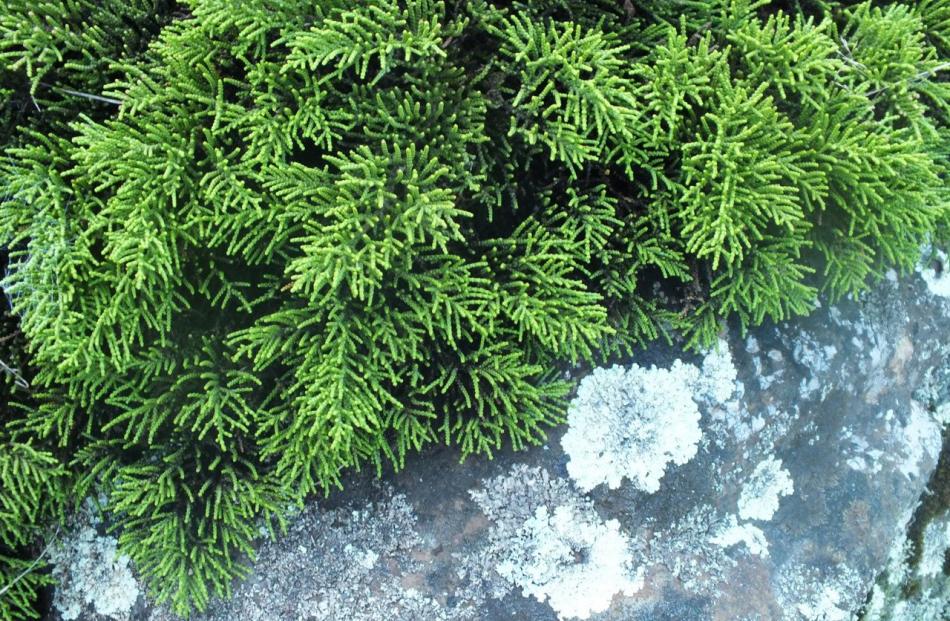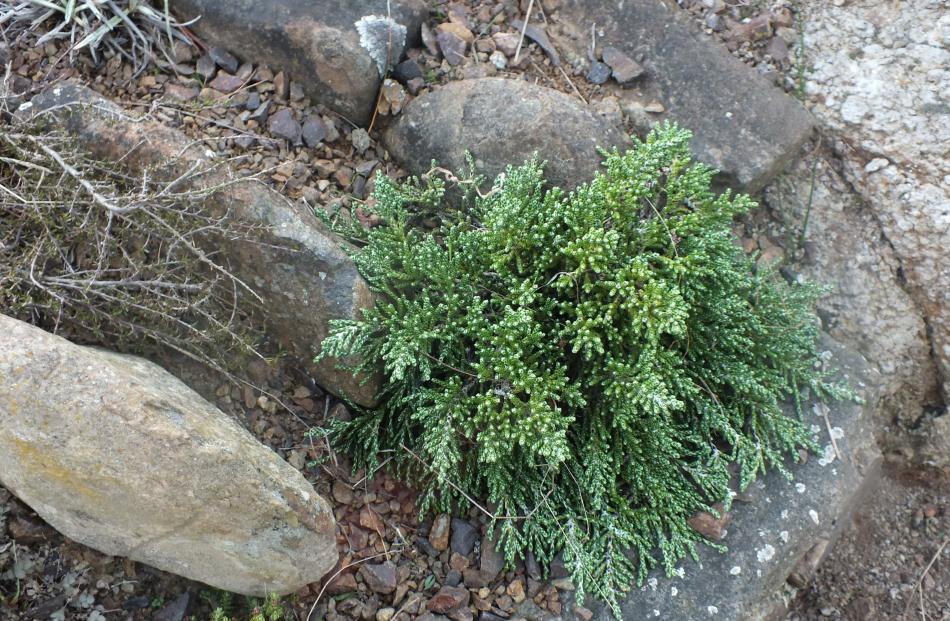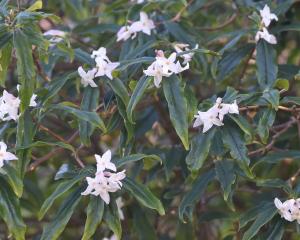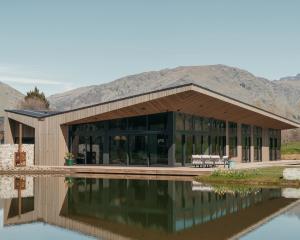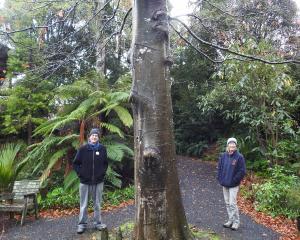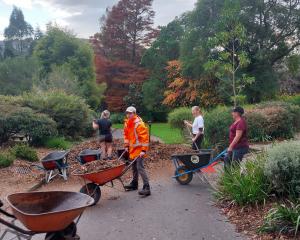Small natives could be more widely used as garden plants, a keen grower maintains. Gillian Vine reports.
Passionate about native plants, David Lyttle doesn’t confine his interest to growing his favourites but ensures he gives back something.
A dab hand at propagating, the Dunedin man spends part of his time cultivating rare and endangered plants from Otago Peninsula — such as hebe-like Helichrysum intermedium var. tumidum — so they can be returned to their native habitat.
A keen photographer and tramper, David has combined his hobbies to build up an enviable collection of shots of photogenic natives, many from alpine parts of the South Island.
Spotting them in the wild can be challenging unless they are in bloom, he says. To make his point, he uses a photo he took on Little Omarama Saddle, North Otago, of the cryptic buttercup (Ranunculus crithmifolius).
"This species is widespread on the drier eastern ranges of Canterbury and Otago. It grows on silty, gravelly scree but is generally overlooked unless it is in flower," he explains.
David is obviously a great believer in the notion "small is beautiful", as his collection of ground-hugging natives demonstrates.
New Zealand has about 40 forget-me-nots, of which only two — Myosotis capitata, from the Auckland and Campbell Islands, and M. antarctica — have blue flowers.
For gardeners, David recommends white-flowered M. saxosa, which is endangered in the wild.
"Myosotis saxosa is one of the few New Zealand [forget-me-not] species that can be easily cultivated at low altitudes. It makes an excellent pot plant which should be grown in a free draining, high-fertility soil, placed in the full sun," David says.
"It is a great plant that forms a lovely mound covered with white flowers."
There are other alpine plants that will grow far from their high-altitude habitats.
David points to Astelia nivicola, saying, "It’s an alpine [plant], a very pretty one."
Unlike the more familiar A. chathamica Silver Spear, which can reach 1m or more, A. nivicola grows to just 30cm, and a reddish-bronze version, Red Devil, is available from some nurseries.
Celmisias, too, come in various sizes, from Stewart Island’s shrubby silver cushion daisy (Celmisia clavata) to little striped-leaf C. prorepens, from the Rock and Pillar Range.
But this group is not for everyone, it seems.
"They are very problematic plants to cultivate. They’ll be going well, then die for no apparent reason," David says.
On the other hand, given a "relatively cool" rockery environment, little Geum cockaynei demonstrates its ability do well as a garden plant.
Some of New Zealand’s 45 coprosmas are ground-hugging plants.
Coprosma brunnea and various forms of the sand coprosma (C. acerosa) are widely available, while David suggests C. atropurpurea for its dark-tipped leaves and the wine-red berries that are produced if both male and female plants are grown.
Native brooms (Carmichaelia species) are another of his special interests — "I’m trying to collect all the small broom species" — and his collection is grown in pots.
These include the stout broom (C. monroi) and Marlborough’s C. astonii, while of the brooms found in parts of Otago, he has C. vexillata, C. corrugata and C. nana.
These little gems all have pea-like flowers, usually pink, some with purple highlights.
All are declining in the wild, a good reason to grow them as pot plants.
"The diversity and range of New Zealand alpine flora is not appreciated," David says, and he wants to encourage people to grow them.
To illustrate his point, he will have a number of his plants on show and for sale at the Otago Alpine Garden Group’s show on October 1-2, at St Peter’s Church hall, Hillside Rd, Dunedin.


